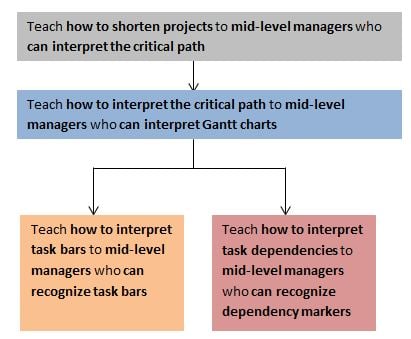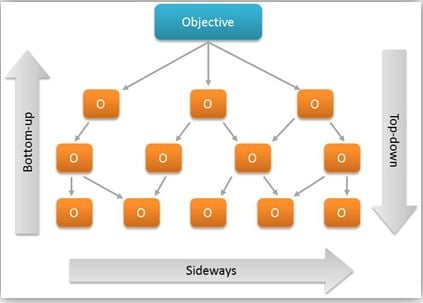Prerequisites of Learning Objectives in E-learning

As instructional designers, we often set learning objectives for eLearning courses as a matter of routine. But how often do we pause and think about the learning objective itself – its components and prerequisites?
→ Download Now: Instructional Design 101
In this blog, we will explore the prerequisites of learning objectives and how to construct learning objects based on the learning objectives. This also involves deciding the teaching sequence of the objectives.
Frame the learning objectives
Once we have a clear idea of the target audience and intended purpose of the course, we frame the learning objectives using Bloom’s Taxonomy, a key approach in instructional design. A simple way of writing effective learning objectives for an eLearning course is to ensure it has 3 main components:
- Intent – what will be taught in the course
- Target audience – who are required to take this course
- Prerequisites – prior requirements needed to understand and complete the course successfully
Intent describes what the eLearning course aims to teach. The target audience specifies the group of people the course is aimed at. Finally, the prerequisites list the prior skills, knowledge and attitudes the learners must possess to accomplish the learning successfully.
Example
- Teach how to shorten projects – Intent
- to mid-level managers – Target audience
- who recognize the critical path – Prerequisite
To facilitate better understanding, we will use this example throughout this blog.
Prerequisites
E-learning courses seldom have simple, standalone learning objectives. In most cases, the top-level learning objective will have prerequisites which must be satisfied. Using instructional design strategy, we need to identify those prerequisites and construct a hierarchy of prerequisites.
In our example, the prerequisite is that mid-level managers should be able to recognize the critical path in a Gantt Chart. But not all mid-level managers might possess this knowledge. Hence, we need another lower-level objective (teaching how to interpret the critical path) to meet this prerequisite.
This new learning objective, in turn has its own prerequisite – the ability to interpret Gantt charts. The ability to interpret Gantt charts can be split further into the ability to recognize task bars and dependency markers. These become the prerequisites for the objective – being able to interpret Gantt charts.

Instructional Design 101
A Handy Reference Guide for eLearning Designers
- eLearning standards
- Streamlined instructional design process
- Effective assessments
- And More!
Thus, starting from the top-level learning objective, we will have a hierarchy of objectives as we drill down into the prerequisites of each one.

This hierarchy or cascade of learning objectives and their prerequisites forms a tree structure. But, this structure may not always capture/depict all the prerequisite relationships. Also, some of the lower-level learning objectives may be too detailed and not included in the course. In such cases, the content for these objectives can be provided as additional resources.
The Teaching Sequence
Now that all the learning objectives are identified, we as instructional designers must decide the sequence in which learners will accomplish these objectives. Following key instructional design principles, we need to create standalone learning objects, where each learning object covers a single learning point in its entirety.
There are three main learning sequences which will help us teach learners.
- Bottom-up
- Top-down
- Sideways

Bottom-up is the most commonly used sequence. In this sequence, we teach the prerequisites before teaching the objectives that need these prerequisites.
In the Top-down sequence, we start teaching the top-level objective, and learners who lack knowledge of the prerequisites can travel down the hierarchy and access those particular learning objects.
In the Sideways sequencing, learners are given the freedom to navigate through the eLearning course and learn freely according to their preference and knowledge.
I hope, you now have an idea of how to frame the learning objectives and objects so that taking the eLearning course becomes a memorable journey of exploration for your learners. Have any other thoughts on this topic, do share with us.
Source: This blog is based on the book ‘E-Learning by Design’ by William Horton. The examples and illustrations are also taken from the same book.





